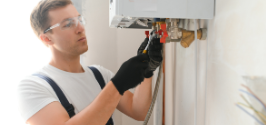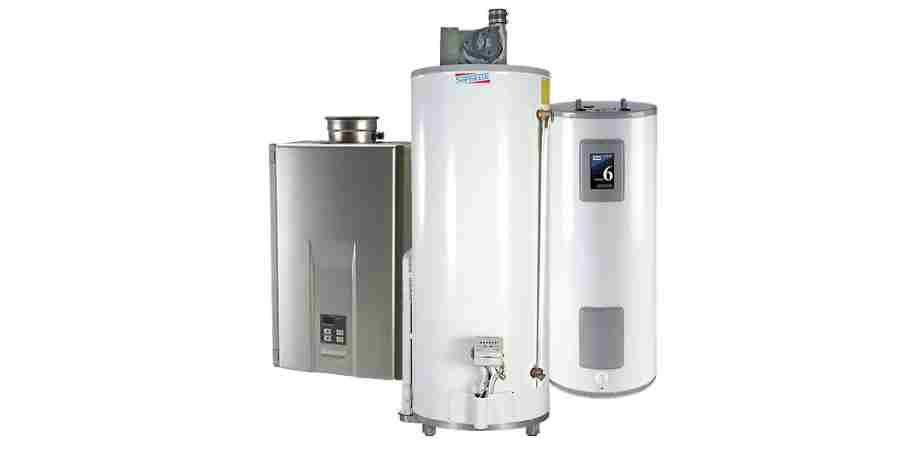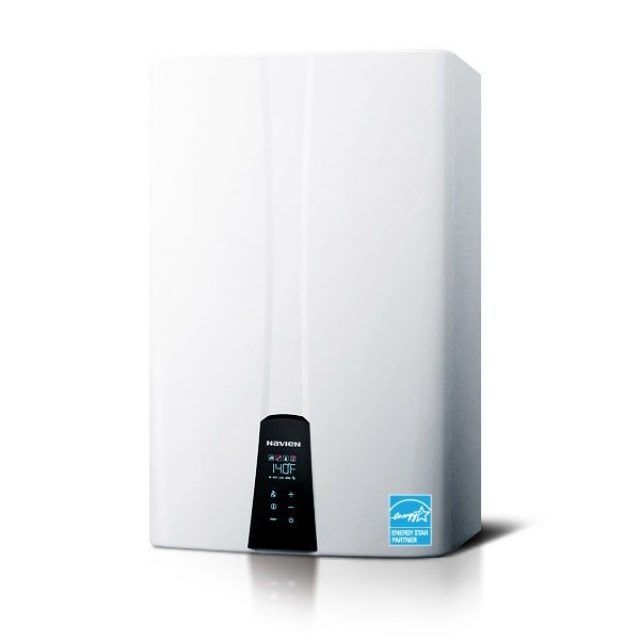A water heater is an essential appliance in any household, providing hot water for showers, washing dishes, and other daily tasks. However, over time, sediment and mineral buildup can accumulate in the tank, reducing its efficiency and potentially causing damage. That's why it's important to regularly flush your water heater to keep it running smoothly. In this article, we'll discuss the steps for flushing a water heater and why it's important. You don’t ALWAYS need a plumber. These are easy for the DIY plumbing pros.
How to Flush a Water Heater
Brandon Brown

Why Is Flushing a Water Heater Important?
Over time, sediment and minerals from the water supply can build up in your water heater tank. This buildup can cause a variety of issues, including reduced efficiency, increased energy costs, and even damage to the tank. Flushing your water heater regularly can help prevent these problems and extend the lifespan of your appliance.
Improved Efficiency and Lower Energy Costs
As sediment and minerals accumulate in the tank, they create a layer of insulation between the heating element and the water. This insulation makes it harder for the water to heat up, resulting in longer heating times and increased energy usage. Flushing the tank removes this buildup, allowing the water to heat up more quickly and efficiently.
Prevent Damage to the Tank
If sediment and minerals are left to build up in the tank, they can cause damage to the tank itself. The buildup can create hot spots on the tank's walls, leading to cracks and leaks. Flushing the tank regularly can help prevent this damage and save you from costly repairs or replacements.

How to Flush a Water Heater
Flushing a water heater is a relatively simple process that can be done in a few easy steps. However, it's important to note that the steps may vary slightly depending on the type of water heater you have. We'll cover the general steps for flushing a traditional tank water heater, as well as specific instructions for flushing a Noritz or Rheem tankless water heater.
Flushing a Traditional Tank Water Heater
Turn off the power or gas supply to the water heater. For electric water heaters, you can turn off the power at the circuit breaker. For gas water heaters, turn off the gas supply valve.
Turn off the cold water supply to the water heater. This valve is usually located near the top of the tank.
Connect a garden hose to the drain valve at the bottom of the tank. Place the other end of the hose in a nearby drain or outside.
Open the pressure relief valve at the top of the tank to allow air into the tank and help the water drain more quickly.
Open the drain valve and let the water drain out of the tank. You may need to open the pressure relief valve again to allow air into the tank as it drains.
Once the tank is empty, close the drain valve and turn the cold water supply back on. This will help flush out any remaining sediment.
Let the water run through the tank and out the drain valve for a few minutes, or until the water runs clear.
Close the pressure relief valve and turn off the cold water supply.
Remove the garden hose and close the drain valve.
Allow the tank to fill with water. Turn the power or gas supply back on and allow the tank to warm to thermostat temperature.
Once the tank is full, turn on a hot water faucet in your home to release any air from the tank.
Check for any leaks around the tank and make sure the water is heating up properly.
Flushing a Noritz Tankless Water Heater
Turn off the power supply to the water heater.
Locate the isolation valves on the cold and hot water lines. These are usually located near the bottom of the unit.
Close the isolation valves to prevent water from flowing through the unit.
Connect a hose to the cold water isolation valve and place the other end in a nearby drain or outside.
Open the hot water isolation valve and let the water drain out of the unit.
Once the unit is empty, close the hot water isolation valve and open the cold water isolation valve.
Let the water run through the unit for a few minutes, or until it runs clear.
Close the cold water isolation valve and remove the hose.
Open the hot water isolation valve and turn the power supply back on.
Check for any leaks around the unit and make sure the water is heating up properly.
Flushing a Rheem Tankless Water Heater
Turn off the power supply to the water heater.
Locate the isolation valves on the cold and hot water lines. These are usually located near the bottom of the unit.
Close the isolation valves to prevent water from flowing through the unit.
Connect a hose to the cold water isolation valve and place the other end in a nearby drain or outside.
Open the hot water isolation valve and let the water drain out of the unit.
Once the unit is empty, close the hot water isolation valve and open the cold water isolation valve.
Let the water run through the unit for a few minutes, or until it runs clear.
Close the cold water isolation valve and remove the hose.
Open the hot water isolation valve and turn the power supply back on.
Check for any leaks around the unit and make sure the water is heating up properly.
Some of these units will need to be flushed by a professional plumber.

What is the lifespan of a water heater?
Traditional Water Heater Lifespan:
A traditional water heater, typically a tank-style unit, has an average lifespan of 10 to 15 years. The longevity of these water heaters is influenced by factors such as the quality of the unit, maintenance practices, and the local water quality. Over time, sediment buildup inside the tank can reduce efficiency and contribute to corrosion, ultimately leading to the need for replacement.
Tankless Water Heater Lifespan:
Tankless water heaters, also known as on-demand or instantaneous water heaters, generally have a longer lifespan compared to traditional units. On average, tankless water heaters can last 20 years or more. Their extended lifespan is attributed to the absence of a storage tank, which reduces the risk of corrosion and eliminates issues related to standing water. Regular maintenance, such as descaling, can further contribute to their longevity.
Factors Affecting Lifespan:
Quality of Manufacturing: High-quality materials and construction contribute to a longer lifespan.
Water Quality: Hard water with high mineral content can lead to sediment buildup and affect the lifespan of both types of water heaters.
Maintenance: Regular maintenance, including flushing the tank or descaling for tankless units, can extend the lifespan.
Usage Patterns: The frequency and demand for hot water impact the wear and tear on the unit.
Replacement Considerations:
When a water heater approaches the end of its lifespan, or if it starts exhibiting issues like leaks, strange noises, or a decline in efficiency, it's advisable to consider replacement. Upgrading to a more energy-efficient model or transitioning from a traditional to a tankless unit may be worthwhile, taking into account technological advancements and potential long-term savings on energy costs.

How Often Should You Flush Your Water Heater?
The frequency of flushing your water heater will depend on the quality of your water supply. If you have hard water, you may need to flush your water heater more often. As a general rule, it's recommended to flush your water heater at least once a year.
How To Flush Your Water Heater
@spotonplumbing1161 teaches you how to flush your water heater.
Flushing your water heater is an important maintenance task that can help improve efficiency, prevent damage, and extend the lifespan of your appliance. By following the steps outlined in this article, you can easily flush your water heater and keep it running smoothly for years to come. Remember to consult your water heater's manual for specific instructions and always turn off the power or gas supply before beginning any maintenance tasks. Spot On Plumbing of Tulsa Plumbers can help with all of your plumbing emergency needs.
